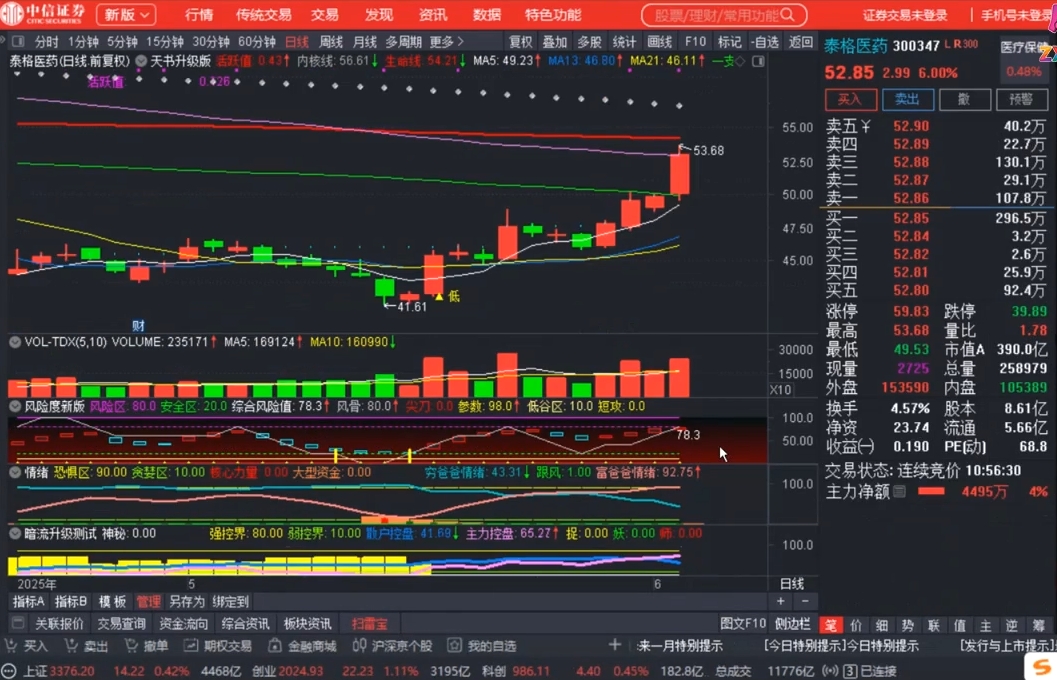
本文深入探讨了在 Next.JS 或 React 应用中动态修改 SVG 属性和添加新节点的高效方法。通过将 SVG 结构直接定义为 React 组件,我们能够利用组件的状态(state)和属性(props)来灵活控制 SVG 内部元素的文本、样式、位置以及动态增删节点,从而实现高度可定制和交互式的 SVG 内容,避免了传统 dom 操作的复杂性,并与 React 的声明式范式无缝集成。
理解传统 SVG 加载与动态操作的挑战
在 next.js 或其他 react 应用中,我们常常使用像 svgr 这样的工具将 svg 文件导入为 react 组件。例如:
import CvSvg from './../../public/image.svg' export default function Home() { return ( <div className="flex flex-col min-h-screen"> <CvSvg /> </div> ) }
这种方式对于静态 SVG 非常方便。然而,当我们需要根据应用状态动态修改 SVG 内部的文本、颜色、位置或甚至添加新的图形元素时,直接使用 CvSvg 组件就显得力不从心了。
尝试通过 fetch SVG 内容并使用 DOMParser 进行操作,然后通过 dangerouslySetInnerhtml 渲染,虽然在某些场景下可行,但这种方法与 React 的声明式范式不符,难以管理状态、事件,并且可能导致性能问题或不必要的 DOM 重绘,尤其是在频繁更新的场景下。
// 这种方法不推荐用于 React 中的动态 SVG 操作 import { useEffect, useState } from 'react'; import SVG from './public/image.svg' // 注意:这里可能需要配置 webpack/next.js 来正确处理 SVG 文件的直接导入 function Home() { const [svgDoc, setSvgDoc] = useState(null); useEffect(() => { fetch(SVG) .then(response => response.text()) .then(data => { const parser = new DOMParser(); const svgDoc = parser.parseFromString(data, "image/svg+xml"); const text = svgDoc.querySelector('#tspan59991'); if (text) { text.textContent = "New Dynamic Message"; // 修改文本 // 修改样式属性 text.setAttribute('style', 'font-size:6px;fill:blue;stroke:none;stroke-width:0.264583;stroke-opacity:1'); } const line = svgDoc.createElementNS('http://www.w3.org/2000/svg', 'line'); line.setAttribute('x1', '79.525864'); line.setAttribute('y1', '30.664894'); line.setAttribute('x2', '90'); line.setAttribute('y2', '30.664894'); line.setAttribute('style', 'stroke:#000000;stroke-width:1'); if (text && text.parentNode) { text.parentNode.appendChild(line); // 添加新节点 } setSvgDoc(svgDoc.documentElement.outerHTML); }) .catch(error => console.error("Error fetching SVG:", error)); }, []); return ( <div className="flex flex-col min-h-screen"> {svgDoc ? <div dangerouslySetInnerHTML={{ __html: svgDoc }} /> : <p>Loading SVG...</p>} </div> ); } export default Home;
上述代码虽然尝试了修改和添加节点,但其核心问题在于脱离了 React 的渲染机制。
将 SVG 视为 React 组件进行动态操作
最直接且符合 React 范式的方法是,将 SVG 的 XML 结构直接转化为 JSX,并将其封装为一个 React 组件。这样,我们就可以像操作任何其他 React 组件一样,通过 props 传递数据,通过 state 管理内部状态,从而实现对 SVG 元素的完全控制。
核心思想:
- 直接 JSX 嵌入: 将 SVG 的
- 利用 Props: 将需要动态变化的属性(如文本内容、颜色、位置、可见性等)作为组件的 props 传递进来。
- 利用 State: 如果 SVG 内部有需要组件自身管理的状态,可以使用 React 的 useState 或 usereducer。
- 条件渲染: 对于需要动态添加或移除的 SVG 节点,可以使用 React 的条件渲染机制。
动态修改 SVG 属性
在 JSX 中,SVG 元素的属性与 HTML 元素类似,但需要注意以下几点:
- 属性名: SVG 属性名通常是小驼峰命名(camelCase),例如 strokeWidth 代替 stroke-width,viewBox 代替 viewbox。
- 样式: 内联样式通过 JavaScript 对象形式定义,例如 style={{ fontSize: ’10px’, fill: ‘red‘ }}。
例如,修改 tspan 元素的文本内容和样式:
// MyDynamicSvg.jsx import React from 'react'; const MyDynamicSvg = ({ mainText, textColor, fontSize }) => { return ( <svg viewBox="0 0 200 100" xmlns="http://www.w3.org/2000/svg"> <text x="79.525864" y="29.664894" // 使用 JSX 样式对象,属性名转为小驼峰 style={{ fontSize: `${fontSize}px`, fill: textColor, stroke: 'none', strokeWidth: '0.264583', // 注意 strokeWidth strokeOpacity: 1 }} > {/* 文本内容直接通过 props 传递 */} <tspan id="tspan59991">{mainText}</tspan> </text> </svg> ); }; export default MyDynamicSvg;
添加新的 SVG 节点
在 React 组件中添加新的 SVG 节点非常简单,只需在 JSX 中直接声明即可。如果需要根据条件添加,可以使用逻辑运算符或三元表达式。
例如,在 tspan 节点后添加一条线:
// MyDynamicSvg.jsx import React from 'react'; const MyDynamicSvg = ({ mainText = "Default Message", textColor = "#000000", fontSize = 4.93889, showExtraLine = false, // 控制是否显示线的 prop lineColor = "#000000" }) => { return ( <svg viewBox="0 0 200 100" xmlns="http://www.w3.org/2000/svg"> {/* 文本元素 */} <text x="79.525864" y="29.664894" style={{ fontSize: `${fontSize}px`, fill: textColor, stroke: 'none', strokeWidth: '0.264583', strokeOpacity: 1 }} > <tspan id="tspan59991">{mainText}</tspan> </text> {/* 根据 showExtraLine prop 条件渲染新的 line 节点 */} {showExtraLine && ( <line x1="79.525864" y1="35.664894" // 调整 Y 坐标使其位于文本下方 x2="150" y2="35.664894" stroke={lineColor} strokeWidth="1" /> )} {/* 也可以添加其他静态或动态的 SVG 元素 */} <circle cx="10" cy="10" r="5" fill="blue" /> </svg> ); }; export default MyDynamicSvg;
示例代码:一个完整的动态 SVG 组件
以下是一个结合了动态文本、样式和条件添加新节点的完整示例。
首先,创建 components/MyDynamicSvg.jsx 文件:
// components/MyDynamicSvg.jsx import React from 'react'; /** * 一个动态 SVG 组件,支持修改文本、颜色、字体大小和添加一条线。 * @param {object} props - 组件属性 * @param {string} props.mainText - 主要文本内容 * @param {string} props.textColor - 文本颜色 * @param {number} props.fontSize - 字体大小 * @param {boolean} props.showExtraLine - 是否显示附加线 * @param {string} props.lineColor - 附加线的颜色 */ const MyDynamicSvg = ({ mainText = "默认消息", textColor = "#000000", fontSize = 4.93889, showExtraLine = false, lineColor = "#000000" }) => { return ( // 定义 SVG 视口和命名空间 <svg viewBox="0 0 200 100" xmlns="http://www.w3.org/2000/svg"> {/* 动态文本元素 */} <text x="79.525864" y="29.664894" style={{ fontSize: `${fontSize}px`, fill: textColor, stroke: 'none', strokeWidth: '0.264583', strokeOpacity: 1 }} > <tspan id="tspan59991">{mainText}</tspan> </text> {/* 根据 showExtraLine 属性条件渲染附加线 */} {showExtraLine && ( <line x1="79.525864" y1="35.664894" // 调整 Y 坐标使其位于文本下方 x2="150" y2="35.664894" stroke={lineColor} strokeWidth="1" /> )} {/* 示例:一个静态的圆形元素 */} <circle cx="10" cy="10" r="5" fill="blue" /> </svg> ); }; export default MyDynamicSvg;
然后,在你的 Next.js 页面或父组件中使用它,例如 pages/index.js 或 app/page.js:
// pages/index.js (或 app/page.js) import React, { useState } from 'react'; import MyDynamicSvg from '../components/MyDynamicSvg'; // 根据你的文件结构调整路径 export default function HomePage() { const [currentText, setCurrentText] = useState("Hello Dynamic SVG!"); const [showExtraLine, setShowExtraLine] = useState(true); const [lineColor, setLineColor] = useState("#FF0000"); // 初始红色 const [fontSize, setFontSize] = useState(10); // 初始字体大小 return ( <div className="flex flex-col min-h-screen p-4 items-center"> <h1 className="text-2xl font-bold mb-4">动态 SVG 演示</h1> {/* 控制面板 */} <div className="mb-6 p-4 border rounded-lg shadow-md bg-gray-50"> <div className="mb-3"> <label htmlFor="textInput" className="block text-sm font-medium text-gray-700">修改文本内容:</label> <input type="text" id="textInput" value={currentText} onChange={(e) => setCurrentText(e.target.value)} className="mt-1 block w-full px-3 py-2 border border-gray-300 rounded-md shadow-sm focus:outline-none focus:ring-blue-500 focus:border-blue-500 sm:text-sm" placeholder="输入新文本" /> </div> <div className="mb-3"> <label htmlFor="fontSizeInput" className="block text-sm font-medium text-gray-700">字体大小:</label> <input type="range" id="fontSizeInput" min="5" max="20" value={fontSize} onChange={(e) => setFontSize(Number(e.target.value))} className="mt-1 block w-full" /> <span className="text-xs text-gray-500">{fontSize}px</span> </div> <div className="mb-3 flex items-center"> <input type="checkbox" id="showLineCheckbox" checked={showExtraLine} onChange={(e) => setShowExtraLine(e.target.checked)} className="h-4 w-4 text-blue-600 border-gray-300 rounded focus:ring-blue-500" /> <label htmlFor="showLineCheckbox" className="ml-2 block text-sm text-gray-900">显示附加线</label> </div> {showExtraLine && ( <div className="mb-3"> <label htmlFor="lineColorInput" className="block text-sm font-medium text-gray-700">附加线颜色:</label> <input type="color" id="lineColorInput" value={lineColor} onChange={(e) => setLineColor(e.target.value)} className="mt-1 block w-full h-10 border border-gray-300 rounded-md shadow-sm focus:outline-none focus:ring-blue-500 focus:border-blue-500" /> </div> )} </div> {/* 渲染动态 SVG 组件 */} <div className="border p-4 bg-white rounded-lg shadow-lg"> <MyDynamicSvg mainText={currentText} textColor="#000000" // 文本颜色保持黑色 fontSize={fontSize} showExtraLine={showExtraLine} lineColor={lineColor} /> </div> <p className="mt-6 text-sm text-gray-600 text-center max-w-md"> 此示例展示了如何通过 React Props 动态控制 SVG 内部元素的文本内容、字体大小、可见性及样式属性。 </p> </div> ); }
注意事项与最佳实践
- SVG 属性命名: 确保将 SVG 属性从 kebab-case(如 stroke-width)转换为 camelCase(如 strokeWidth),以便在 JSX 中正确解析。
- 内联样式: 使用 JavaScript 对象来定义内联样式,例如 style={{ fill: ‘red’, strokeWidth: ‘2’ }}。
- 性能: 对于非常复杂的 SVG,如果其结构需要频繁的大规模修改,直接在 JSX 中编写可能会导致组件渲染开销较大。但对于大多数场景,这种方式的性能是完全可接受的。
- 可访问性: 当 SVG 包含重要信息时,考虑添加适当的 aria-label、role 或 title、desc 元素以提高可访问性。
- 替代方案:
- 命名空间: 虽然在



















